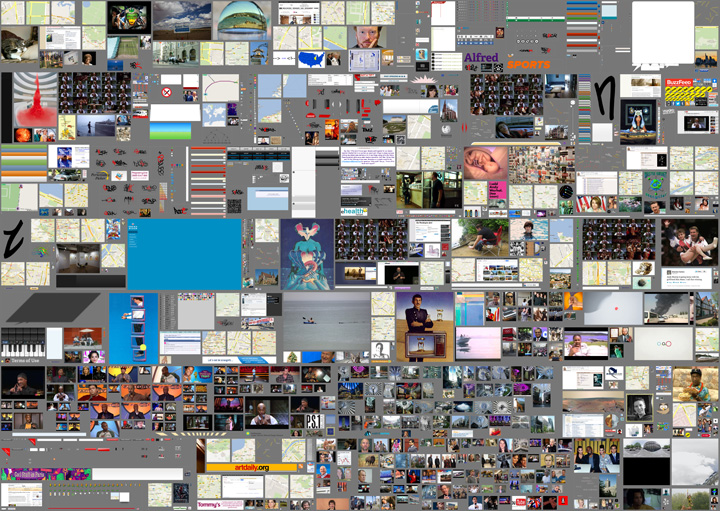- Ê
- Â
fPaul has 2 post(s)
í Unit 11: Paul Soulellis

Question
How does design make sense of so much stuff?
Unit summary
We’re swimming in data. The relentless production of digital material has shifted us into a new condition where the foundation of graphic design — image and language — cannot exist without somehow touching (or being touched by) the internet. Massive archives, from digitized libraries to social media platforms, are part of the new landscape that artists and designers rely on for the production and communication of networked culture. In the face of this overwhelming accumulation of stuff, curation is key. In this unit, we’ll look at how archives, collections and curation can be used to create meaning.
In the face of this massive accumulation of stuff, curation is key. What does this mean?
Curation involves searching for value and constructing meaning by actively engaging with material in a new context. Isolating (and combining), aligning (and disrupting), juxtaposing (and scattering) — these are editorial moves that can create powerful narratives.
By setting up a simple (or complex) relationship between several things, we can tell stories.
In this first unit in DS3, we’ll look at how various techniques, like framing, sequence, montage, and surprise can be used to explore the creation of meaning in and around a collection. Each student will focus on a single archive — found material of your own choosing — as a way to investigate memory, authorship and storytelling.
Learning objectives
- Increase awareness and understanding for the changing nature of content as it relates to design and networked culture
- Learn to position yourself in relation to a specific archive of material and investigate its storytelling potential
- Learn to translate type and imagery into new work (design authorship)
- Learn to assemble, design and communicate ideas into stories using different kinds of media (publishing)
Comments are closed.
-
-
Instructors
John Caserta Michelle Bowers Lucinda Hitchcock Tom Wedell Tom Ockerse Joe Marianek Clement Valla Rich Rose Dinah Fried Paul Soulellis Jacek Mrowczyk Hammett Nurosi Ben Shaykin James Goggin Sections
- Announcement (2)
- Assignments (20)
- Lecture (7)
- Links (20)
- Outline (44)
- Unit 01: John Caserta (8)
- Unit 02: Lucinda Hitchcock (3)
- Unit 03: Tom Ockerse (6)
- Unit 04: Michelle Bowers (3)
- Unit 05: Tom Wedell (4)
- Unit 06: Clement Valla (2)
- Unit 07: Dinah Fried (2)
- Unit 08: Joe Marianek (1)
- Unit 09: Rich Rose (3)
- Unit 10: John Caserta (8)
- Unit 11: Paul Soullelis (1)
- Unit 12-Lucinda Hitchcock (1)
- Unit 13: Hammett Nurosi (1)
- Unit 14: Jacek Mrowczyk (1)
- Readings (11)
- Resources (6)
Syllabi
-
About
Core undergraduate graphic design studio at Rhode Island School of Design
